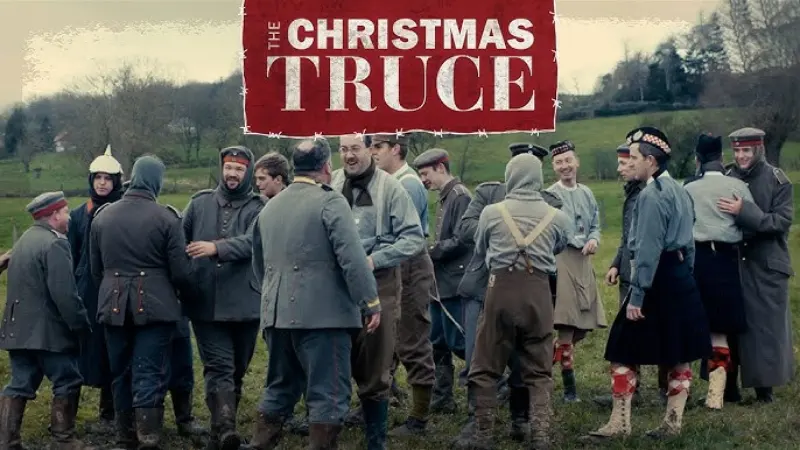In 1914, during the darkest days of World War I, something miraculous happened on Christmas Eve. The relentless roar of gunfire fell silent, and the bleak, muddy trenches transformed as soldiers laid down their weapons. The halt marked history, it showcased the greatest of humanity and goodwill amid the severe hostile and bloodied war. Here’s the spirit of Christmas Eve.
Many stories have been recounted about this unforgettable moment in the memory of World War I. But what really happened on that miraculous day? Did the Western Front truly witness a miracle? Did British and German soldiers really step out into No Man’s Land to exchange gifts and play football? Although the war continued on several fronts, some soldiers along the Western Front laid down their arms to come to a truce for Christmas.
What Happened That Day?
On December 24, 1914, soldiers on the Western Front experienced an unplanned ceasefire. The Germans began the exchange by placing candle-lit Christmas trees along their trenches and singing carols, which caught the attention of British troops stationed just across the way. The sound of “Silent Night” drifted through the stillness, and British troops responded with their own carols.
At first, there was uncertainty—would this peace be accepted, and would it last? Yet, as both British and German soldiers met each other in No Man’s Land, a silent agreement of peace settled over them. Handshakes were exchanged, and soldiers shared small tokens like cigarettes, chocolate, and buttons. While the truce was not observed across the entire front, in numerous locations, the guns fell silent, allowing soldiers to celebrate Christmas together, creating a temporary respite from the relentless violence of the battlefield.
The Astounding Stories of Christmas Truce
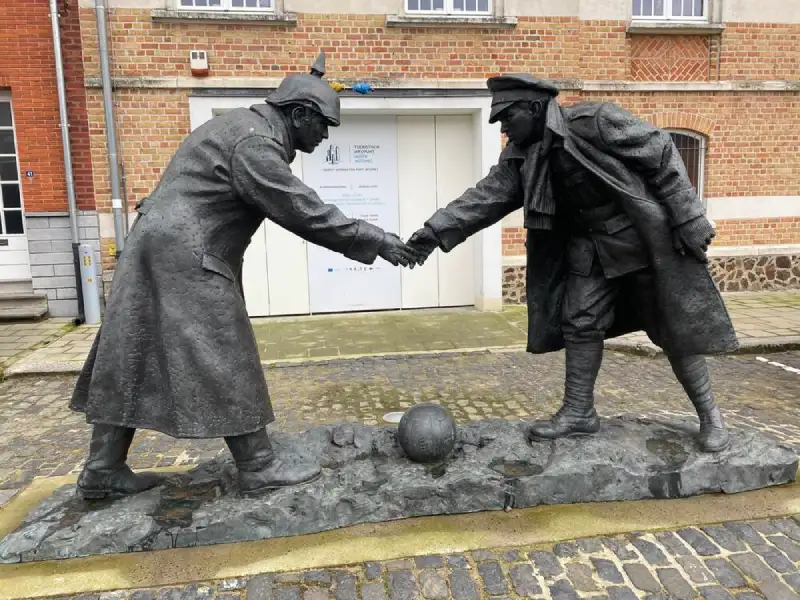
The Christmas Truce of 1914 was unforgettable for many and the event that happened that day remains a wonder in the history of warfare. Though it lasted only for a short time, this extraordinary event left a lasting impression, capturing moments of humanity and compassion that transcended the brutality of war. Here are some of the most remarkable stories that emerged from that day, each illustrating the powerful spirit of Christmas and the shared values that brought soldiers together across enemy lines.
1. Songs of Peace Under the Stars
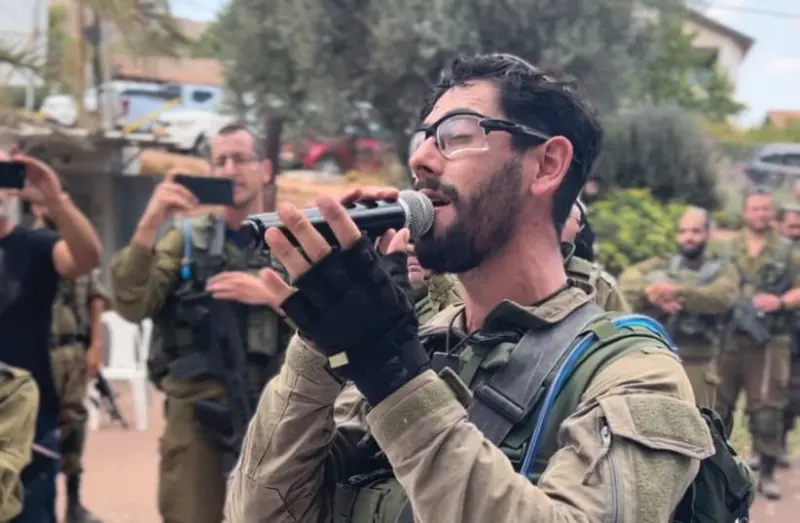
In the cold night of December, the sound of “Stille Nacht” (Silent Night) suddenly embraced the atmosphere of the horrid war. The melodious tune of carols coming from the German side was soon recognized by the British soldiers in the opposite trenches. Caught off guard by the unexpected song, British soldiers were confused with Germans singing amidst the war. But soon they responded with their own carols, including versions of “Silent Night” in English. “We first heard the Germans singing a carol, and they finished their carol, and we thought we ought to retaliate in some way, so we sang ‘The First Noel’ back to them,” recalled British soldier Graham Williams.
On the freezing Christmas Eve, when the Germans were unwrapping their gifts from home, many lit lanterns on the trenches in the spirit of the holiday. The effect was almost magical. The carols made soldiers who had only known each other as enemies at war, exchange music instead of gunfire. Voices filled the frigid air, blending into a harmony that seemed to transcend language and nationality. For a few hours, the Western Front was united by music, creating a shared experience that brought soldiers a rare sense of warmth and comfort far from home.
2. The Iconic Football Match
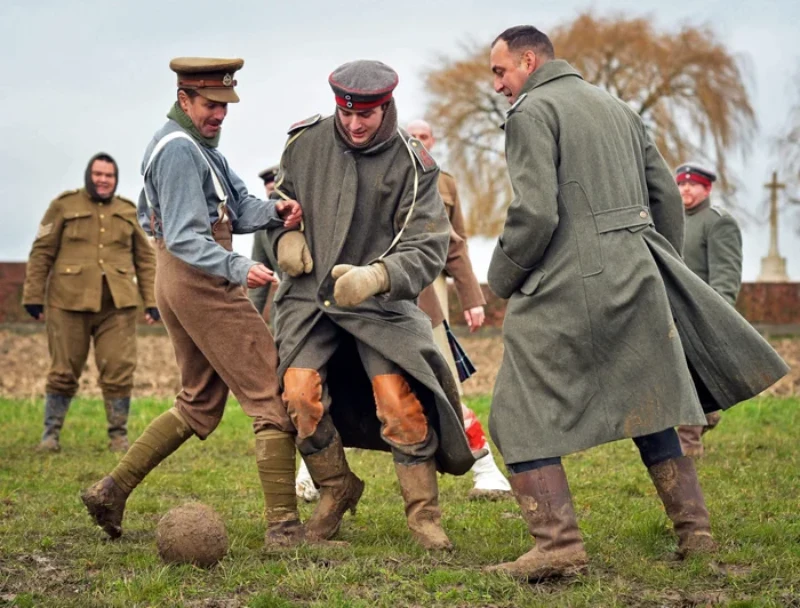
Among all the stories recounted, one of the most well-known stories of the Christmas Truce is the football match that took place between British and German soldiers in No Man’s Land. Although certain aspects of this story remain questionable, a considerable number of sources prove that a soccer ball appeared on that Christmas Day. While some say that the Germans brought out the ball other recounted as a makeshift “ball” which was created from rags or whatever could be found. Regardless of the details, both sides soon joined in an informal game, creating a powerful symbol of unity.
The football match wasn’t a formal game by any means—no teams, referees, or boundaries. It was later accounted that the truce wasn’t confined only to one battlefield. Many French, German, Belgian and British troops held impromptu cease-fires across the Western Front. While many thought the war would end soon and they would be reunited with their families for holidays, it was scattered as the war continued for four years. The 1914 Christmas brought a miraculous change and was appreciated by many for the momentary break from the gun sounds and devastations.
3. The Exchange of Gifts and Tokens
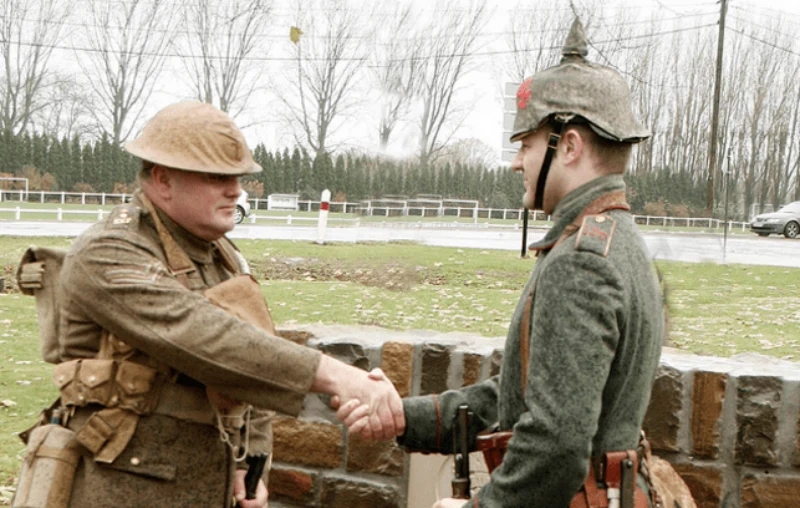
The recovered diaries and letters from the first world war recounted occasions where the enemies found the warmth of the home for the first time in many years. They exchanged small gifts and shared cigarettes, chocolate, and tins of food, each side offering a piece of their own rations as a gesture of goodwill. Items such as buttons, hats, and other personal belongings were also swapped, becoming cherished souvenirs for the men who participated. These simple exchanges make them realize humans after all.
Many soldiers would later recount how these exchanges humanized their adversaries. Private Frank Richards of the Royal Welch Fusiliers recalled, “We shook hands, wished each other a Merry Christmas, and were soon conversing as if we had known each other all our lives.” Receiving something as personal as a cigarette or a piece of chocolate from an enemy allowed soldiers to see beyond the uniform and realize that their opponents were not so different from themselves. This exchange of gifts underscored the shared humanity that united them, if only for a short time, in a celebration of peace and goodwill.
4. Sharing Meals and Stories
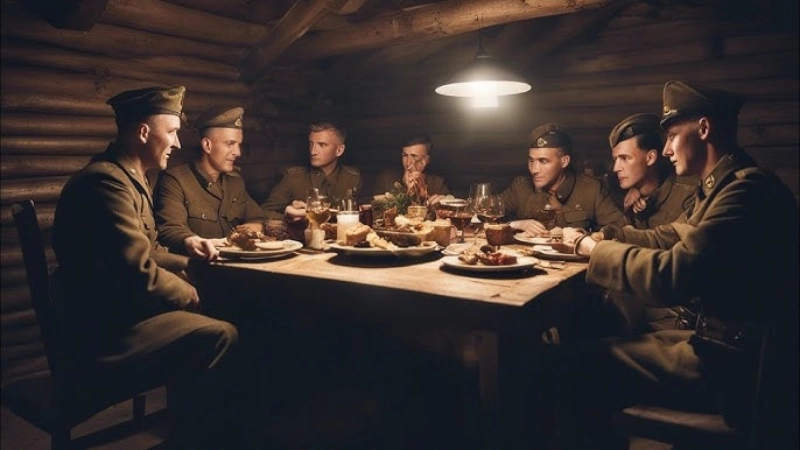
The truce also gave soldiers a rare chance to gather and interact as people rather than enemies. After exchanging gifts, many soldiers sat together, sharing stories about their families, homes, and the lives they had left behind. British soldier Private Frederick Heath recalled the experience, describing how soldiers gathered to share whatever food and drink they had on hand, creating a sense of camaraderie and mutual respect.
Gathering in small groups, soldiers from both sides conversed, relying on a mix of broken language and hand gestures to communicate. Though the language barrier limited some conversations, soldiers found ways to convey their shared feelings and exchange stories. These moments, filled with laughter and storytelling, allowed them to step away from the fear and violence of war, if only for a brief time. Some soldiers even took photographs together, capturing images that would later serve as a testament to the powerful connections made that day.
5. Burying the Fallen Together
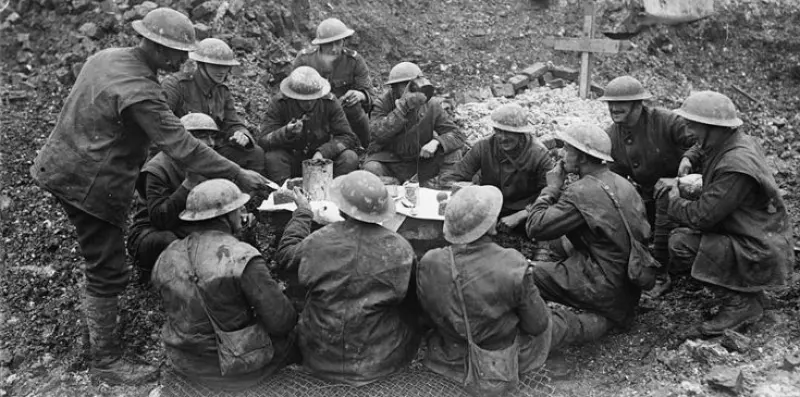
The truce also allowed the soldiers to pay their final respect by burying the dead who perished in No Man’s Land. Often, the bodies of soldiers remained on the ground, and the families could not get them for weeks since moving them could be done only at night because of the fire. However, on Christmas Day, when the shooting stopped, soldiers from both sides went out to recover and bury the bodies. In some regions, the British and German soldiers bury their dead in a formal manner, paying tribute to the lives that were lost on both sides of the conflict.
These ceremonial meetings allowed both the parties to remember the costs that had been paid by both nations. To many of soldiers, burying their comrades with the enemies laid side by side was a way of spitting the reality of war. They exchanged prayers, bowing in remembrance of the victims, no matter what their country of origin. Such acts of commemoration were a moving experience for the participants as it strengthened the belief that humanity still reigns over their morale.
6. Letters Home: Reliving the Christmas Truce
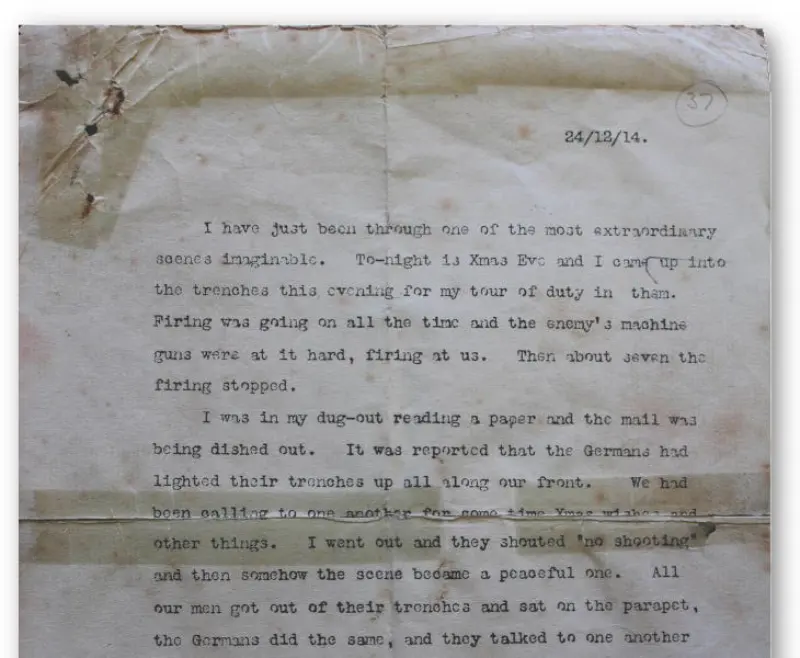
Soldiers were quick to write home about the miraculous events they experienced during the truce. Letters sent by British and German soldiers alike described the surreal nature of coming face-to-face with the “enemy” and finding a friend. British officer Captain Robert Patrick Miles wrote to his family, sharing how he had talked and even joked with the Germans in No Man’s Land. Many soldiers shared similar stories, describing the joy and wonder of celebrating Christmas with the very men they had been ordered to fight.
These letters became cherished documents, capturing firsthand accounts of a unique and extraordinary event in history. These letters conveyed the desire of the soldiers wanting to have a moment of peace and want to keep the little good things that they have experienced. For the families back home, these letters were something of a ray of hope and some humanity in between the brutal reports of the ongoing war.
The End of the Truce and Its Lasting Legacy
Even though the Christmas Truce brought a moment of peace, it was destined to end. As the war called for their duty, soldiers reluctantly returned to their trenches to resume their role. Many were left torn with a conflicted sense of duty; the truce gave them a sense of humanity and affected their morale. For some, the transition back to combat was deeply challenging, as the peace was more inviting to them.
The 1914 Christmas Truce remains an unforgettable story of shared humanity and goodwill. Although the truce did not alter the course of the war, it left an indelible mark on those who experienced it. This extraordinary event continues to be celebrated as a reminder of the capacity for peace, even in the darkest times. It is a legacy that endures, inspiring people around the world to remember the power of kindness, unity, and shared humanity.
